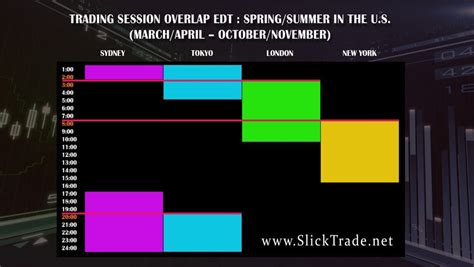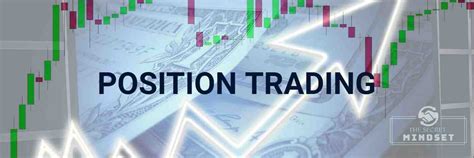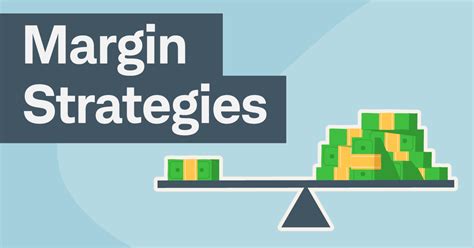When it comes to forex trading, timing is everything. Knowing when to trade forex can make all the difference between a successful trade and a missed opportunity. With the forex market operating 24 hours a day, five days a week, it offers traders the flexibility to engage at any time, but the key is understanding which hours are most advantageous. Factors like market volatility, trading sessions, and global economic events can significantly influence your ability to make profitable decisions.
Understanding Forex Market Hours
The forex market is unique in its structure, offering 24-hour access to trading. However, certain times can offer better opportunities based on market activity and liquidity. Understanding when to trade forex is essential for optimizing your strategy.
Forex Market Structure and Trading Hours
The forex market is open five days a week, with trading happening around the clock. It operates in four main trading sessions, each influenced by the major financial centers:
Asian Session (Tokyo): Starts at 11:00 PM GMT and ends at 8:00 AM GMT. It’s a quieter session but crucial for currency pairs like USD/JPY and AUD/USD.
European Session (London): Runs from 7:00 AM GMT to 4:00 PM GMT. Known for its liquidity and volatility, this session is key for major pairs such as GBP/USD and EUR/USD.
U.S. Session (New York): Begins at 12:00 PM GMT and closes at 9:00 PM GMT. This session sees a peak in volume, especially for EUR/USD, USD/CAD, and GBP/USD pairs.
Overlapping Sessions: The overlap of the London and New York sessions from 12:00 PM to 4:00 PM GMT is often considered the best time to trade due to high liquidity and volatility.
The Role of Market Sessions: Asian, European, and U.S. Sessions
The different trading sessions impact forex volatility in various ways. The Asian session tends to be quieter, with more stable prices and lower volume, making it ideal for traders focusing on position trading and long-term trends. Meanwhile, the European and U.S. sessions offer higher volatility, which benefits strategies like scalping and day trading.
Asian Session: Characterized by less movement, suitable for slower trading strategies.
European Session: Known for sudden price movements and the potential for profitable short-term trades.
U.S. Session: Provides peak trading volume and fast-moving prices, which could be ideal for news-based trading.

Overlapping Sessions: A Key to Better Trading Opportunities
When London and New York overlap, liquidity increases dramatically, and market volatility spikes. This time window provides the ideal conditions for more active traders who rely on high volatility to execute their trades.
<step 1> Increased Liquidity: More market participants from various regions increase the volume of transactions.
<step 2> Higher Volatility: As both markets are open, price movements are typically more volatile, offering potential for higher profits or losses.
<step 3> Faster Execution: With more participants, the execution of trades is faster, especially on platforms like MetaTrader 4 or MetaTrader 5.
Time Zones and Global Forex Activity
Forex activity varies significantly across global time zones. Traders can take advantage of different sessions to align with their trading strategy. For example, trading the USD/JPY during the Asian session might align better with a swing trading strategy, while the European and U.S. sessions are optimal for short-term traders seeking higher volatility.
The Impact of Daylight Saving Time on Forex Trading Hours
Daylight Saving Time (DST) can shift the start and end times of each trading session, leading to changes in trading behavior. In regions that observe DST, the trading hours of major markets like London and New York can temporarily overlap more or less, which impacts market volatility. Traders should be aware of these seasonal shifts to adjust their strategies accordingly.
The best time to trade forex is often linked to understanding market hours, sessions, and global activity patterns. By trading during periods of higher liquidity and volatility, such as during the London-New York overlap, traders can capitalize on optimal conditions.
Trading Strategies for Different Times
The timing of your forex trades plays a critical role in your strategy’s effectiveness. Each trading strategy—whether it's scalping, day trading, swing trading, or position trading—requires specific market conditions for optimal performance. Understanding when the best times to execute these strategies are can significantly influence your success in the market.
Scalping: Best Times for Quick Profits
Scalping is a high-frequency, short-term trading strategy where traders aim to profit from small price movements. This strategy requires the market to be highly liquid and volatile.
Optimal Times: The best times to scalp are during market hours when liquidity is high, particularly during the overlap of the London and New York trading sessions. This period typically sees increased volatility, providing more opportunities for quick trades.
Key Considerations: Scalpers should focus on currency pairs with tighter spreads, such as EUR/USD or GBP/USD, to minimize transaction costs.
Tools for Scalping: Use technical indicators like the Moving Average and Stochastic Oscillator to identify quick price movements. A Risk-Reward Ratio of 1:1 is common in scalping trades to minimize potential losses.
Swing Trading: Timing Long-term Trends
Swing trading is all about capturing medium-term trends, often lasting a few days or weeks. Traders who use this strategy rely on technical analysis to identify price swings, with less emphasis on the minute-to-minute price fluctuations.
Ideal Market Times: Swing traders often target specific trading sessions, typically the overlap between the London and New York sessions, as it tends to provide higher volatility and better price movements for longer-term positions.
Economic Events: Major economic reports like GDP Growth, inflation data, or central bank decisions can cause significant market movements that are ideal for swing trading.
Trend Identification: Use Fibonacci Retracement and Bollinger Bands to spot entry and exit points within broader market trends.

Position Trading: A Long-term Approach to Timing
Position traders take a more macroeconomic approach, holding trades for weeks, months, or even years. Timing is less critical compared to shorter-term strategies, as position traders aim to profit from large, long-term trends in the market.
Macroeconomic Events: Position traders benefit from key economic events such as changes in interest rates or shifts in unemployment rates, which can move currency markets for an extended period.
Market Timing: The best time to enter a position trade is often based on fundamental analysis, looking for signs of a long-term trend or reversal based on economic data or central bank policies.
Strategy: Traders may use Moving Averages to confirm the long-term trend direction before committing to positions.
Day Trading: How to Manage Short-Term Timing
Day traders aim to capitalize on short-term market movements within the trading day. They generally open and close positions within the same day, avoiding overnight risks.
Time of Day: The most volatile period for day traders is often the first two hours of the London-New York overlap, when the market experiences significant price movement and liquidity.
Market Sentiment: Keep an eye on market sentiment, whether bullish or bearish, as this will guide your entry and exit points.
Technical Indicators: Use indicators like the Relative Strength Index (RSI) and MACD to identify overbought or oversold conditions that present short-term opportunities.
Currency Pairs and Their Behavior Across Time Zones
The forex market operates around the clock, and understanding the behavior of different currency pairs across time zones is key to making informed decisions. Different pairs show varying activity levels depending on which market session is open.
EUR/USD: Peak Activity During European and U.S. Sessions
The EUR/USD pair, representing the euro and the U.S. dollar, is the most traded currency pair worldwide. It sees its peak activity during the European and U.S. market hours.
Key Time Window: The optimal trading window for EUR/USD is between 8 AM and 12 PM EST when both European and U.S. markets overlap.
Market Liquidity: This pair benefits from high liquidity, meaning smaller spreads and faster executions, which can lead to more favorable trading conditions.
Volatility: EUR/USD tends to show higher volatility during U.S. economic data releases or central bank meetings.
Impact of U.S. Economic Data: Reports such as Non-Farm Payrolls or Consumer Price Index (CPI) can cause significant movement in the pair.
Best Strategy: Day traders often favor scalping or short-term trend-following strategies during this time for the best price action.
GBP/USD: Optimal Trading Hours for British Pound
The GBP/USD pair is particularly active during the London and U.S. overlap, between 8 AM and 12 PM EST.
Market Overlap: This is when both London traders and U.S. traders are active, providing high liquidity.
Influence of UK Data: The British Pound responds strongly to economic data such as GDP growth or inflation reports.
Central Bank Influence: The Bank of England's monetary policy decisions can create significant volatility in GBP/USD, often seen around 7 AM EST.
AUD/USD and Asian Session Dynamics
The behavior of the AUD/USD pair is intrinsically linked to the Asian market session. Here's how:
Opening of the Asian Session: The Australian dollar tends to move in response to news from China, Australia’s major trading partner.
Key Hours: The most active time for AUD/USD is during the Tokyo trading session, which begins at 7 PM EST.
Influence of Commodities: Since Australia is a major commodities exporter, fluctuations in commodity prices like gold and oil can directly affect AUD/USD.
Liquidity Peaks: Liquidity in the AUD/USD pair is generally lower during the early Asian session but picks up as the session progresses.
Strategic Considerations: Traders can use trend-following strategies during high liquidity periods, especially if commodity markets are experiencing strong trends.
USD/JPY and the Tokyo Session
The USD/JPY pair is unique in its volatility patterns, especially during the Tokyo session. Here's why:
Tokyo Session Dominance: The USD/JPY pair tends to show more volatility during the Tokyo market hours, which run from 7 PM to 4 AM EST.
Market Influences: The Bank of Japan's monetary policy, as well as global risk sentiment, heavily influences the value of the yen.
Optimal Trading Time: USD/JPY experiences heightened activity during early hours of the Tokyo session, creating opportunities for short-term traders.
Risk Sentiment: The yen is often seen as a safe haven, so fluctuations in global risk appetite can impact its behavior against the U.S. dollar.
Cross-Pairs (EUR/GBP, EUR/JPY) and Timing Considerations
Cross-currency pairs, like EUR/GBP and EUR/JPY, present unique timing considerations:
EUR/GBP Dynamics: The EUR/GBP pair is influenced by economic releases from both the Eurozone and the UK. Optimal trading times are when both European and U.K. markets are open.
EUR/JPY Behavior: This pair shows heightened activity during the Tokyo session but can also see significant movement during European hours.
Central Bank Policies: Both the European Central Bank (ECB) and the Bank of England (BoE) play key roles in driving price movements in these cross-currency pairs.
Market Liquidity: Cross-pairs often have lower liquidity compared to major pairs, leading to wider spreads, so traders must use caution.
Best Strategy: Traders may want to focus on longer-term trades or position trading to mitigate the effects of the wider spreads.
Fundamental and Technical Analysis: Timing Your Trades with News
Effective forex trading relies not only on strategy but also on the timing of trades, influenced by both fundamental and technical analysis. By analyzing news events and using technical indicators, traders can maximize their potential for profitable trades.
1. The Role of Economic Calendars in Timing Forex Trades
The economic calendar is a vital tool for any forex trader, allowing them to plan their trades around significant economic events. Here’s how traders use it:
Economic reports like GDP growth, inflation rates, and unemployment data are released on specific dates.
Trade opportunities arise during these scheduled announcements, as market volatility tends to spike.
Pre-emptive positioning: Knowing when these events occur helps traders set entry points in advance.
By consulting an economic calendar, traders can align their trades with the news, anticipating potential market shifts and volatility.
2. Interest Rates and Central Bank Announcements
Interest rate decisions by central banks, such as the Federal Reserve or the European Central Bank, often trigger large market movements. Central bank announcements typically cause volatility in currency pairs like EUR/USD or GBP/USD.
Interest rate changes directly impact the attractiveness of a currency. When central banks raise rates, the currency often strengthens due to higher returns on investments in that currency. Conversely, rate cuts can lead to a weaker currency, providing short-term trading opportunities for forex traders.
The timing of these announcements is crucial for traders who wish to profit from the potential price fluctuations.
3. Technical Indicators and Their Timing Relevance
Technical indicators offer traders insights into the ideal times to enter or exit trades. Some commonly used indicators include:
Moving Averages: Smooth out price action, helping to identify trends. They are particularly useful in determining when a trend may change direction.
Relative Strength Index (RSI): Measures momentum. When RSI hits extreme levels, it suggests that the market may be overbought or oversold, signaling an opportunity to trade.
Bollinger Bands: These bands expand and contract with volatility, helping traders pinpoint periods when the market may be ready to move significantly.
By combining these tools, traders refine their entry and exit timing, aiming to capitalize on key moments when market conditions are favorable.
4. Market Sentiment: Impact of News on Timing Decisions
News events—such as political upheaval, elections, or global crises—can drastically shift market sentiment. For example, the outcome of an election in the U.S. can create bullish or bearish sentiment depending on the anticipated policies of the winner.
Bearish sentiment can trigger sell-offs in currency pairs like GBP/USD if investors expect negative political changes in the UK.
Bullish sentiment may prompt buying in currency pairs like EUR/USD when positive economic data from the EU is released.
Understanding how news affects market sentiment helps traders determine when to time their trades for maximum impact.
5. Forex Volatility and Timing Strategies
News events are often linked with high volatility, which can be both an opportunity and a risk for traders. During volatile periods, forex traders may adjust their strategies:
<step 1> Identify major news events: Key reports like interest rate announcements or GDP data releases can lead to significant price swings.
<step 2> Use tighter stop-losses: With increased market volatility, traders adjust their risk management strategy by setting narrower stop-loss orders to limit potential losses.
<step 3> Capitalize on volatility: Traders skilled in news trading may choose to leverage this volatility, riding the price swings for profit.
Knowing how and when to trade during volatile times can significantly improve the chances of success in the forex market.
6. Risk Management: Timing Stop-Loss and Take-Profit Orders
Properly timing stop-loss and take-profit orders is crucial in forex trading, especially during periods of news-driven volatility. Here’s how timing affects these orders:
| Event Type | Stop-Loss Strategy | Take-Profit Strategy |
|---|---|---|
| Economic Report | Set tighter stop-loss orders to minimize risk | Position take-profit orders slightly above or below key levels |
| Interest Rate Decision | Broader stop-losses may be used for long-term trends | Set take-profit levels at key psychological price points |
| Political News | Use trailing stop-loss orders to lock in profits as market moves | Set take-profit orders based on immediate price surge |
By adjusting these orders in real-time, traders protect their capital while optimizing potential profits. Timing and placement of these orders based on news events can make a big difference.
The interplay between fundamental and technical analysis is vital for any forex trader aiming to time their trades effectively. By combining the insights gained from economic calendars, central bank actions, and technical indicators with an understanding of market sentiment and volatility, traders can position themselves to make more informed and timely decisions.

Choosing the Right Trading Platform for Timing Your Trades
When trading forex, choosing the right platform can significantly influence how effectively you time your trades. The trading platform you use should not only be reliable but also equipped with features that enhance your ability to execute trades at the perfect moment. Below, we’ll explore three of the most popular platforms: MetaTrader, cTrader, and TradingView, each offering tools and features that support timing strategies in unique ways.
MetaTrader 4 and 5: How These Platforms Support Timing Strategies
MetaTrader platforms are some of the most widely used in forex trading, largely because they offer robust features for timing trades effectively. These platforms’ core capabilities—such as automated trading and real-time alerts—can significantly aid traders in capitalizing on the best trading moments.
Automated Trading: MetaTrader 4 and MetaTrader 5 support Expert Advisors (EAs), which are algorithms that allow trades to be executed automatically based on specific market conditions. This can help traders enter or exit positions without having to monitor the markets constantly.
Real-Time Alerts: Setting up custom alerts on these platforms allows traders to be notified when certain conditions are met, such as a specific price level being reached or an indicator signaling a change. This ensures that traders never miss a prime moment to execute a trade.
Multiple Time Frames: MetaTrader offers traders the ability to analyze multiple time frames simultaneously, helping them spot trends and identify ideal moments for entry or exit in forex pairs like EUR/USD or GBP/USD.
cTrader and the Advantages for Timing Precision
cTrader is another powerful platform known for its user-friendly interface and precision in timing trades. The platform’s advanced charting tools, fast execution speeds, and intuitive design make it an excellent choice for traders focused on getting the best price at the right time.
Precision Execution: With its low-latency environment, cTrader provides traders with fast and accurate execution, which is critical for high-frequency trading strategies such as scalping or day trading.
Advanced Charting Tools: cTrader comes with advanced charting tools, such as candlestick patterns and technical indicators (e.g., Moving Average, RSI, Fibonacci retracement), which help traders pinpoint precise entry and exit points.
Customizable Interface: Traders can adjust the layout of their workspace, adding multiple charts, indicators, and trade history windows to monitor market movements closely and take action at the right moment.
TradingView and Market Analysis for Optimal Timing
TradingView is well-known for its advanced charting capabilities and community-driven insights, which can be essential for timing forex trades effectively. The platform’s versatility and comprehensive market analysis tools allow traders to react quickly to market conditions.
Key Features of TradingView for Forex Timing
| Feature | Description | Benefit to Traders |
|---|---|---|
| Real-Time Data | Provides live price feeds and data updates for various currency pairs like USD/JPY, EUR/GBP, and GBP/USD. | Traders can make decisions based on the most current market conditions without delays. |
| Interactive Charts | Offers customizable charts that allow traders to draw trendlines, add indicators like MACD or Bollinger Bands, and zoom in for detailed analysis. | This helps traders identify trends and ideal trade timings by closely analyzing price movements. |
| Social Community and Ideas | Enables traders to share strategies and analysis with a community of traders, offering access to diverse perspectives on potential trade timings. | Traders can gather multiple viewpoints and potentially identify key moments to enter or exit trades. |
| Economic Calendar Integration | Allows traders to integrate an economic calendar to track key events like central bank interest rate decisions, GDP reports, and other fundamental data. | This feature assists in anticipating market moves, especially for news trading strategies. |
By integrating these tools into their trading routine, users of TradingView can stay ahead of market movements and make informed decisions to time their forex trades effectively.
These platforms, whether it's MetaTrader 4, cTrader, or TradingView, all provide unique features that enhance timing precision in the forex market. By understanding and leveraging the specific tools each platform offers, traders can fine-tune their strategies and ensure they are ready to act at the perfect moment, making the most of their trading opportunities.
Risk Management and Optimal Timing
Effective risk management is crucial to every trader's success, and it’s closely tied to knowing the right moments to enter and exit the forex market. Understanding when to place key risk management tools like stop-loss and take-profit orders, how to adjust position sizes, and optimizing the use of leverage can help you maximize your returns while minimizing potential losses.
Stop-Loss and Take-Profit Orders: Timing Your Exits
Stop-Loss Orders: Knowing when to set a stop-loss is critical to safeguarding your capital. It’s essential to place this order at a level that reflects the current volatility of the forex market, considering how pairs like EUR/USD or GBP/USD may behave during specific trading sessions.
Take-Profit Orders: Timing take-profit orders involves understanding price targets, based on either fundamental or technical analysis. For instance, traders often use the Moving Average or the Relative Strength Index (RSI) to help define these levels.
Market Conditions: Set your stop-loss and take-profit orders based on whether market sentiment is bullish or bearish, as well as the broader economic landscape (such as GDP growth or inflation rates).
Position Sizing: Calculating Risk at the Right Time
The key to effective position sizing lies in adjusting it according to market volatility, especially during major economic events such as central bank policy announcements.
Market Volatility: A high-volatility market like the USD/JPY during a news trading event requires smaller positions to manage the potential for large price swings.
Risk Tolerance: Always consider your personal risk tolerance when calculating position size. A general rule of thumb is to risk no more than 1-2% of your account balance on a single trade.
Capital Allocation: As the forex market opens and closes during various trading sessions, adjust your position sizes based on how much you’re willing to risk during those hours of trading.
Economic Indicators: Timing your position size changes around fundamental events such as changes in interest rates or unemployment data can help you manage your exposure.
Risk-Reward Ratio: Timing Your Trades with Proper Risk Assessment
Timing your trades with a well-calculated risk-reward ratio ensures you’re positioning yourself to maximize returns while limiting downside risk.
<Step 1> Calculate the Potential Risk: Before entering a trade, always assess the risk. A typical stop-loss for pairs like EUR/GBP might be placed just beyond a recent low point.
<Step 2> Determine the Reward: Set your take-profit level by analyzing the price target based on recent trends or Fibonacci Retracement levels.
<Step 3> Assess Risk-Reward: A ratio of 1:3 or higher is considered optimal, where you aim to gain three times what you risk.
<Step 4> Timing and Volatility: Adjust your risk-reward ratio based on when to trade; for instance, the London or New York session might offer higher volatility, which could influence your ratio.

Using Margin Safely: Timing Leverage for Better Results
Using leverage is an effective tool, but timing its usage is essential to prevent overexposure.
Leverage in High Volatility: When trading pairs like USD/JPY during periods of extreme volatility, using leverage can amplify both profits and losses. Be cautious of margin calls during these times.
Leverage During Calm Periods: In less volatile market conditions, like during early Asian trading hours, a lower leverage ratio may be more prudent to preserve capital.
Leverage Risk Management: Always ensure that your leverage is in line with your overall risk management strategy. Avoid using maximum leverage during unpredictable events like Brexit or U.S. Federal Reserve announcements.
Conclusion
In conclusion, identifying the best time to trade forex depends on various factors, such as market hours, currency pairs, and specific trading strategies. By aligning your trading schedule with the most active market sessions—particularly during the overlaps of major financial hubs like London and New York—you can take advantage of higher liquidity and increased volatility. Furthermore, understanding how global economic events, such as central bank announcements or GDP reports, impact the market allows traders to refine their strategies for better timing. Ultimately, the ideal time to trade is unique to each trader and should be aligned with personal goals, risk tolerance, and preferred trading style. The flexibility of the forex market means that no matter when you choose to trade, there are opportunities available for every type of trader.













